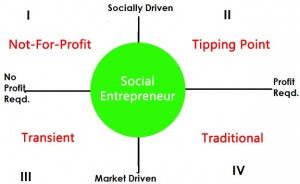October was a busy month for USC innovators.
The eleven teams selected for
the Ideas Empowered Class of 2012 have been immersed in a 12-week innovation
boot camp in preparation to pitch their proposals to a granting committee in
December for part of $500K in proof-of-concept funding to attract commercial
interest in their work. Please read more about their innovations here. We
are very thankful to everyone who makes this program possible, including our
researchers for their commitment to making impact with their innovations, our
donors for their generous financial support, and our reviewers and mentors for
their time and expertise.
The USC Coulter
Translational Research Partnership Program kicked off its second year by
opening up the grant submission window. The program supports and funds
translational research centered on the practical clinical application of
research results. Project pre-proposals are due December 15, 2012. Please click
here to access the Coulter Program Pre-Proposal Funding
Application Form and directions for submission.
Applied Integrin Sciences
(AIS), a startup company formed to develop technologies developed by Drs. Frank
Markland, Steven Swenson and Radu Minea in the Keck School of Medicine of USC,
signed an exclusive license to commercialize a synthetic molecule called
Vicrostatin based on a key component of copperhead snake venom. In preclinical
testing, Vicrostatin has shown promise in combating metastatic cancer and may
have uses in drug delivery and imaging and as a bioadhesive. You can read more
about the technology by clicking
here. AIS is led by USC alumnus Doug Lane, an experienced
pharmaceutical industry executive and two-time NCAA All American shot putter
while at USC.
Inmobly,
Inc., a startup, has signed an exclusive license to commercialize
predictive network technology jointly developed by Ohio State faculty and USC
researchers Guiseppe Caire and Fei Sha of the USC Viterbi School of Engineering
and Margaret McLaughlin of the USC Annenberg School for Communication and
Journalism. The technology is able to anticipate wireless and cellular data
users' demands in advance and utilize this predictive ability to reduce and
optimize the usage of network resources and scarce cellular bandwidth.
TED released the TEDxUSC talk
by USC Architecture faculty member Doris Kim Sung on the TED.com home page. In
its first week, over 100,000 people viewed Dr. Sung's talk on the use of
thermo-bimetals - smart materials that respond dynamically to temperature
change - for building applications. You can see her talk here.
She joins these other USC innovators in having their TEDxUSC talks from Bovard
selected to go global on the TED.com site:
- Dr. Jonathan Clark - STRATOS - The longest free fall in history
- Rodney Mullen - Pop an ollie and innovate!
- Scott Fraser - Why eyewitnesses get it wrong
- Adam Sadowsky - Lessons in life through a Rube Goldberg Machine
- Johanna Blakley - Lessons from fashion's free culture
- Paul Debevec - Animates a photo-real digital face
- David Logan - Tribal leadership
- Qi Zhang - Electrifying organ performance
- Jane Poynter - Life in Biosphere 2
USC Stevens in partnership with
the Diem Shotwell Metcalfe Family Fund at the USC Marshall School of Business
hosted the USC
Student Innovator Showcase as part of Trojan Family Weekend and
awarded $9,000 in prizes. USC Marshall School innovators Reid Pearson ('11) and
Ken Chen won the Most Promising Business Concept Award and the Family Choice
Award for Cleatskins. Keck School of Medicine of USC students Vamsi
Aribindi, Phil Wu, Jonathan Liu, Daniel Naftalovich,
and Amitha Ganti won this year's Most Innovative Award for The
Automatic Hand-Hygiene Verification device. Dinesh Seemakurty of
Lucidity won the Student's Choice Award for Lucidity. You can read
more about the Showcase here.
FIGHT ON!














